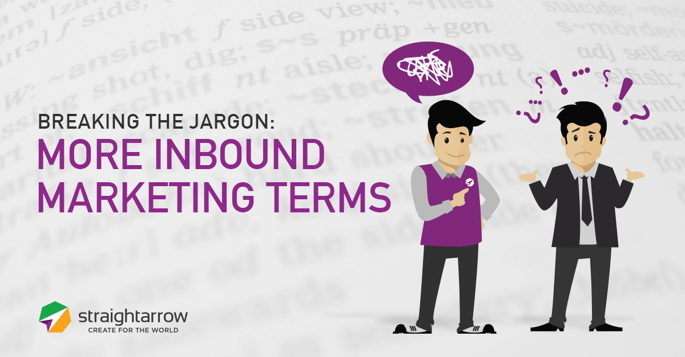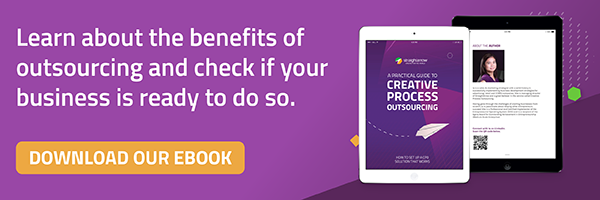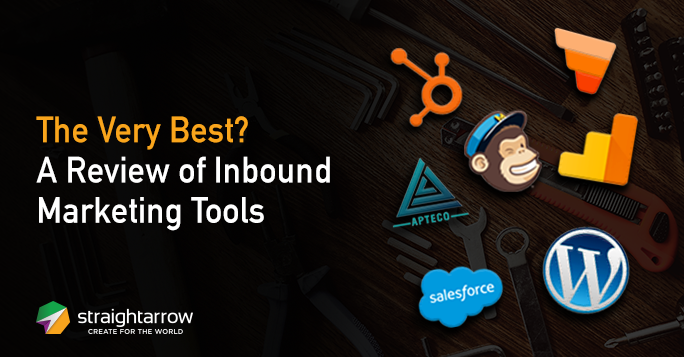
This is a companion piece to our earlier post, which introduced some basic concepts in inbound marketing. If you aren’t yet familiar with the basics of inbound, we recommend reading our earlier piece. If you’ve read it or are already familiar with the basic terms of inbound, then go right ahead.
In this post, we’ll cover other common terms in inbound marketing, which will be useful for businesses looking to change the way they gets customers, or those thinking of adding a little inbound flair to their current marketing efforts. Like last time, the terms will be arranged alphabetically for easy reference.
B2B & B2C
These stand for business-to-business and business-to-consumer, respectively. The former refers to companies that target other corporations as clients, while the latter refers to those that market directly to consumers.
It is important to distinguish whether a company is B2B or B2C as each type’s customers—their usual buyer personae—tend to behave differently on their buyers’ journeys. B2B companies, for instance, often have to sell to managers who don’t have full control over purchasing decisions—they have to seek approval from executives or directors. On the other hand, B2C customers are likely to make independent decisions, but can be heavily influenced by word-of-mouth.
Clickthrough Rate (CTR) and Bounce Rate
Clickthrough rate is the share of total page visitors who advance from one page in your website to another by clicking on a link on the initial page. It can also measure the number of people who clicked a link in an e-mail, as a share of the total number of people who opened it.
Bounce rate measures the share out of a page’s total visitors that did not click on anything on that page. In e-mail marketing, it measures the share of people, out of those who opened an e-mail, that did not follow any links in that e-mail.
Clickthrough and bounce rates are especially useful when the links involved are CTAs.
Conversion Path
A conversion path is a series of steps that a visitor to your website might take to become a lead. A typical conversion path will start with a CTA—at the end of a blog post, maybe, or in a sidebar—that leads a visitor to a landing page with a form they can fill out in exchange for an offer, which will be available on the thank you page to which the form redirects them when accomplished.
The term ‘conversion rate’ is used to describe the share of people who accomplished a form out of the total number of visitors to the landing page where the form is hosted.
Content Management System (CMS)
This refers to a web-based platform that makes it easy for general users to manage, publish, edit and monitor content on a website. A CMS will also typically allow for auxiliary functions like making content available to search engines or web indices, and facilitate user-based tagging. Some providers call such platforms Content Optimization Systems (COS).
Editorial Calendar
An editorial calendar serves as a marketing team’s guide to all things content-related. Tweet this In addition to the title of a post—whether blog, image, video or more—and the date of publication, an entry in an editorial calendar should include the target buyer persona, the keywords to be used, and content offers to be used for the CTA. With all that information readily available, a marketing team can easily track, through their editorial calendar, how often their posts are going out to the various customer groups they target.
Inbound Link
An inbound link is a link on another website that redirects to yours. For this reason, the term applies to the group whose site is being linked to.
A site that receives many inbound links will likely rank higher on search engines. Inbound links are beyond a marketing team’s direct control, but publishing high quality content is one way to increase the chances that other sites will refer their readers to you, at least occasionally.
Key Performance Indicator (KPI)
A KPI is a measure that markets track to evaluate the success of a project or activity. KPIs should reflect the objectives set out for a project at its onset. For example, if a company’s goal is to increase leads, they might take as KPIs the clickthrough rate along a conversion path and, of course, their periodic growth in leads. A poor choice of KPI in such a situation would be total visitors or e-mail open rates. Such figures would still be relevant to marketing overall, but they wouldn’t thoroughly reflect the project’s success.
Keyword
Anyone familiar with search engines will recognize what keywords are—but marketers have to consider them from the other side. Crafting your content around the right keywords will get it to show up more often when users search along those lines.
The most frequently used keywords can be difficult to compete around, however, so marketers usually turn to “long-tail keywords” to corner their niches. These are strings of three or more words—usually a more general search query made more specific by the addition of one or two more words—that represent more specific search topics.
Lead Nurturing
Lead nurturing is a communication process, usually carried out through e-mail and social media, that aims to keep leads engaged and move them further down the marketing-sales funnel. The best lead nurturing methods take note of leads’ behaviorsTweet this, such as recent downloads, purchases, and so on, and develop their content around that data.
Relevant to lead nurturing is marketing automation software, which allows marketing teams to streamline the process of lead nurturing by scheduling e-mails, creating and managing mailing lists, and even setting programs that send e-mails whenever leads perform certain actions, like visiting certain pages, downloading offers, or even prolonged inactivity.
Search Engine Optimization (SEO)
This refers to various methods used to increase a webpage’s visibility or ranking on search engines. Specific methods are classified as either on-page optimization or off-page optimization.
On-page optimization uses elements within a page’s HTML. It boosts a page’s visibility by ensuring that elements such as title tag, page content, image tags and URL contain relevant keywords.
Off-page optimization is any enhancement to a page’s search ranking that relies on elements extraneous to the page itself, like inbound links and social sharing. These factors cannot be directly controlled by marketers, who must use subtler means of influence to boost off-page optimization.
If you’re thinking of using inbound to give your business an advantage, you may want to consider outsourcing some of your marketing processes. For more information, download our practical guide to creative process outsourcing.











Comments